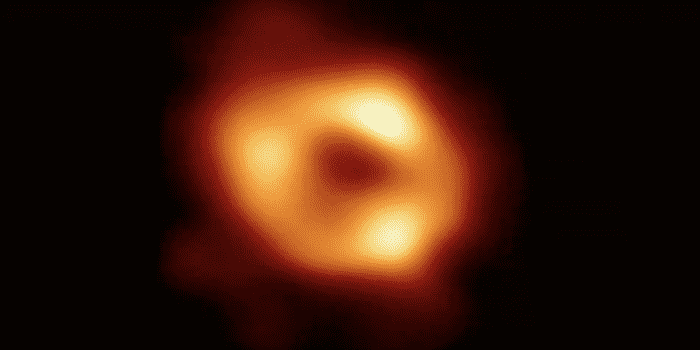The light around our supermassive black hole, Sagittarius A*, has been caught by an international research team using the Event Horizon Telescope (EHT), giving its first image. The latest image from the heart of our Milky Way galaxy contributes to the confirmation of Einstein’s general theory of relativity predictions.
“We were stunned by how well the ring size agreed with predictions from Einstein’s theory of general relativity,” Geoffrey Bower, an EHT collaborator and astronomer at Academia Sinica in Taipei, said in a statement.
“These unprecedented observations have greatly improved our understanding of what happens at the very centre of our galaxy and offer new insights on how these giant black holes interact with their surroundings.”
This isn’t the first time scientists have captured an image of a supermassive black hole. The Event Horizon Telescope collaboration published the first photograph of M87*, a black hole in the heart of the Messier 87 galaxy, in 2019.
Professor of astronomy and physics, Dimitrios Psaltis from the University of Arizona, discussed how the new image confirmed one of Einstein’s predictions. Despite their massive size differences, Sgr A* and MH7* have striking similarities. Sgr A* has a mass four million times that of our Sun, whereas M87* is almost a thousand times smaller.
/https://www.thepeterboroughexaminer.com/content/dam/thestar/news/canada/2022/05/12/how-scientists-took-a-picture-of-the-supermassive-black-hole-at-the-heart-of-our-galaxy/distance_compare.jpg)
Over the last century, scientists have frequently put Einstein’s theory of general relativity to the test, attempting to identify circumstances in which it fails, but they didn’t find one.
This breakthrough was possible thanks to a seminal publication published in 2000 by EHT Science Council members Feryal zel and Dimitrios Psaltis that outlined how to picture one of the celestial giants.
According to new research, the image of a black hole scales only with its mass, indicating that a black hole with 1,000 times less mass will appear nearly identical; the only significant difference will be the size.
/https://www.thepeterboroughexaminer.com/content/dam/thestar/news/canada/2022/05/12/how-scientists-took-a-picture-of-the-supermassive-black-hole-at-the-heart-of-our-galaxy/size_comparison.jpg)
“Taking a picture of the black hole at the centre of our galaxy is an incredible achievement. It shows that Einstein was right, once again,” Duncan Brown, a physics professor at Syracuse University, who was not involved in the cosmic photo op, said in a press release.
“The image shows hot gas swirling around the black hole at the heart of our galaxy. The gas is moving almost as fast as the speed of light,” Brown added.


